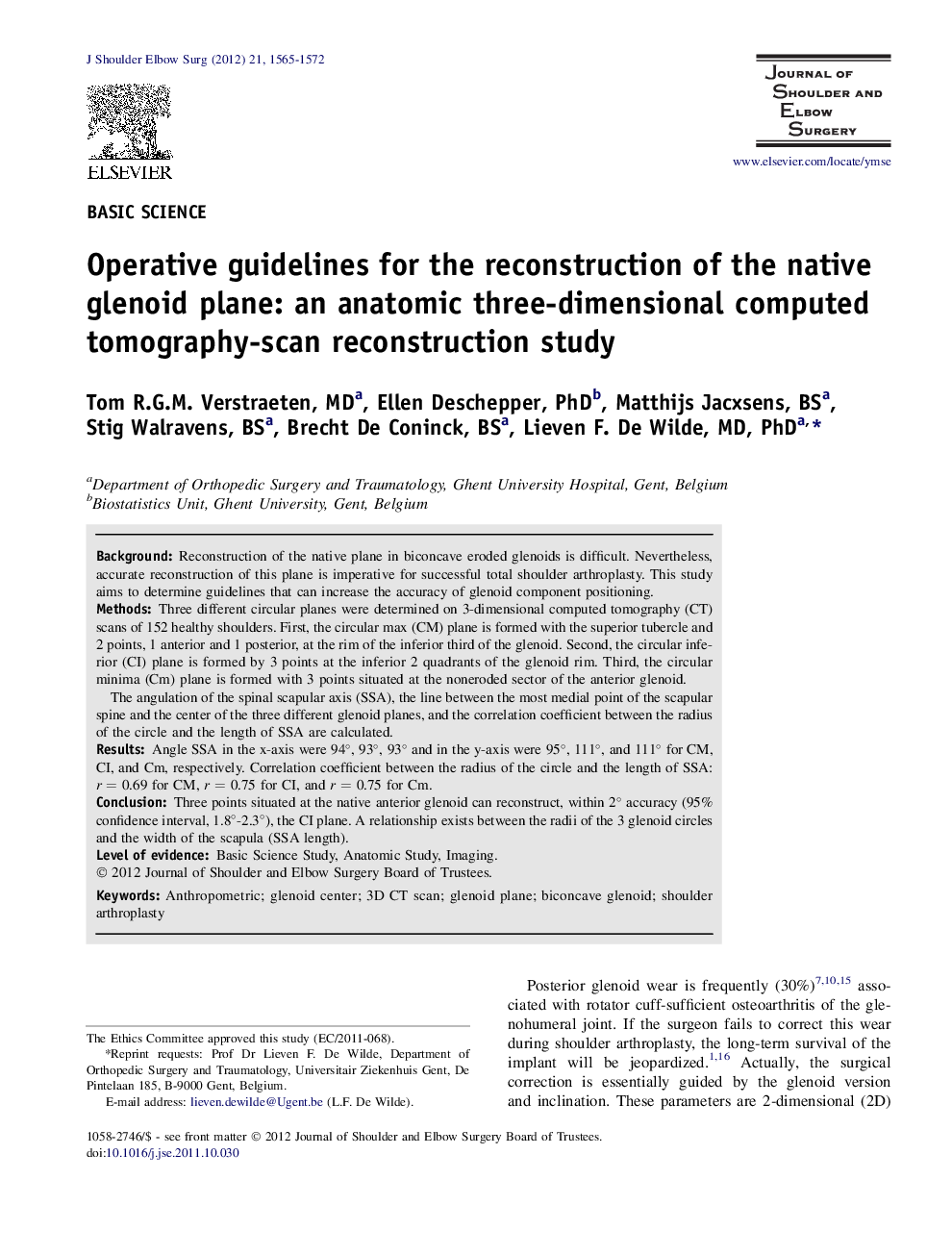| Article ID | Journal | Published Year | Pages | File Type |
|---|---|---|---|---|
| 4073989 | Journal of Shoulder and Elbow Surgery | 2012 | 8 Pages |
BackgroundReconstruction of the native plane in biconcave eroded glenoids is difficult. Nevertheless, accurate reconstruction of this plane is imperative for successful total shoulder arthroplasty. This study aims to determine guidelines that can increase the accuracy of glenoid component positioning.MethodsThree different circular planes were determined on 3-dimensional computed tomography (CT) scans of 152 healthy shoulders. First, the circular max (CM) plane is formed with the superior tubercle and 2 points, 1 anterior and 1 posterior, at the rim of the inferior third of the glenoid. Second, the circular inferior (CI) plane is formed by 3 points at the inferior 2 quadrants of the glenoid rim. Third, the circular minima (Cm) plane is formed with 3 points situated at the noneroded sector of the anterior glenoid.The angulation of the spinal scapular axis (SSA), the line between the most medial point of the scapular spine and the center of the three different glenoid planes, and the correlation coefficient between the radius of the circle and the length of SSA are calculated.ResultsAngle SSA in the x-axis were 94°, 93°, 93° and in the y-axis were 95°, 111°, and 111° for CM, CI, and Cm, respectively. Correlation coefficient between the radius of the circle and the length of SSA: r = 0.69 for CM, r = 0.75 for CI, and r = 0.75 for Cm.ConclusionThree points situated at the native anterior glenoid can reconstruct, within 2° accuracy (95% confidence interval, 1.8°-2.3°), the CI plane. A relationship exists between the radii of the 3 glenoid circles and the width of the scapula (SSA length).
